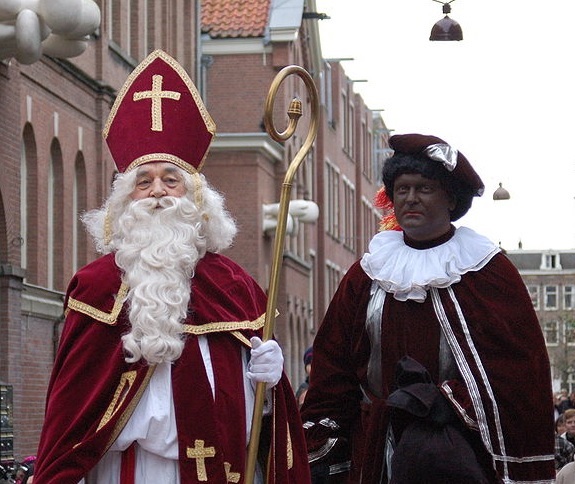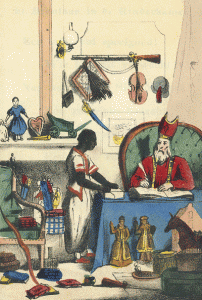Last week, the Dutch population was in uproar after the traditional Sinterklaas holiday was labeled racist by Verene Shepherd, a human rights researcher for the UN. According to Shepherd, the depiction of Saint Nicholas and his black-painted helpers is a step back to slavery and should disappear together with the entire celebration.
To interpret a statement as harsh as this we should take a look at the centuries-old Sinterklaas tradition which is celebrated not only in the Netherlands but also in Belgium and other parts of Europe. In the Netherlands, the two main characters are Sinterklaas (Saint Nicholas) and Zwarte Piet (”Black Pete”). Sinterklaas is based on the historic figure Nikolaos of Myra, the patron saint of children, who lived in the 4th Century A.D. Stories relate to how poor children as early as the Middle Ages were given money on the 6th of December to celebrate the name day of Saint Nicholas. The tradition soon evolved into a family holiday where Saint Nicholas rewarded good children with candy and toys, whereas those who misbehaved would receive a birch rod. The figure and name of the Christmas character Santa Claus was later directly derived from the Dutch Sinterklaas.
Only in the 19th Century did a Dutch schoolmaster introduce a helper for Sinterklaas in his illustrated tales (see illustration). The helper is a black man called Pieter, but the author does not explain where this person came from. Zwarte Piet (“Black Pete) was Sinterklaas’ dedicated but unintelligent servant who was said to keep track of, and punish, disobedient children – effectively acting a deterrent for bad behavior.
Nowadays the disciplinary aspect as well as all religious connotations have disappeared altogether and Sinterklaas is a kind-hearted giver who is always surrounded by a big flock of cheerful Zwarte Pieten. Zwarte Piet is a person painted black or brown with red lipstick, an afro wig, and a page outfit. Black Pete distributes candy to children during the arrival of Sinterklaas in the country and delivers presents through the chimney similar to Santa Claus. It is Zwarte Piet in this current form that the UN research group finds highly insulting and views it as a racial stereotype: “the character and image of Black Pete perpetuate a stereotyped image of African people as second class citizens, fostering an underlying sense of inferiority in Dutch society”.
It is not the first time that the issue of discrimination has been raised. Each year as the holiday approaches, anti-Black Pete groups try to change the appearance of Piet or call for his disappearance altogether. It must be noted though that this is a small minority of the Dutch people. Still, it is not that difficult to imagine that some people have a problem with Piet: he is lower in hierarchy to Sinterklaas, he has an origin that may suggest ties to slavery, and even his looks may be considered a stereotype. Piet’s black complexion is nowadays conveniently explained by the fact that he goes down the chimney to deliver presents. A traditional Sinterklaas children’s song goes:
“though I am black as soot, my intentions are good”
The lyrics are dubious at best.
However, the vast amount of Dutch people harbor a huge affinity for Zwarte Piet who they claim has nothing to do with racism or slavery. Concerned about their beloved Piet’s survival, they rush to his defense with reasons that are sometimes logical but most of the time illogical. The bottom line is that Piet is so anchored in Dutch tradition, that his blackness almost becomes a random attribute; “he could have been any color”.
The recommendation of Shepherd’s research committee to abolish a centuries-old tradition is clearly offensive to those that celebrate it. It is clear that Shepherd has not studied the holiday in its national context. The insufficiency of her knowledge is further confirmed by her wondering: ”What is wrong with one Sinterklaas? Why does the Netherlands have two?” (recall the mention above that Santa Claus is derived from Sinterklaas and that the Netherlands logically does not know the Christmas figure).
When traditions have been in people’s hearts for centuries they often become firmly established in society. Not rarely though, the historical origin may entail elements which are now outdated and are even experienced as offensive, for example stereotype gender roles in many traditions. In this sense, “Black Pete” is certainly not uncontroversial and his looks, role and behavior will most likely continue to be a topic of debate over the years to come.
Text: Margit de Boer
Cover photo: Michell Zappa






